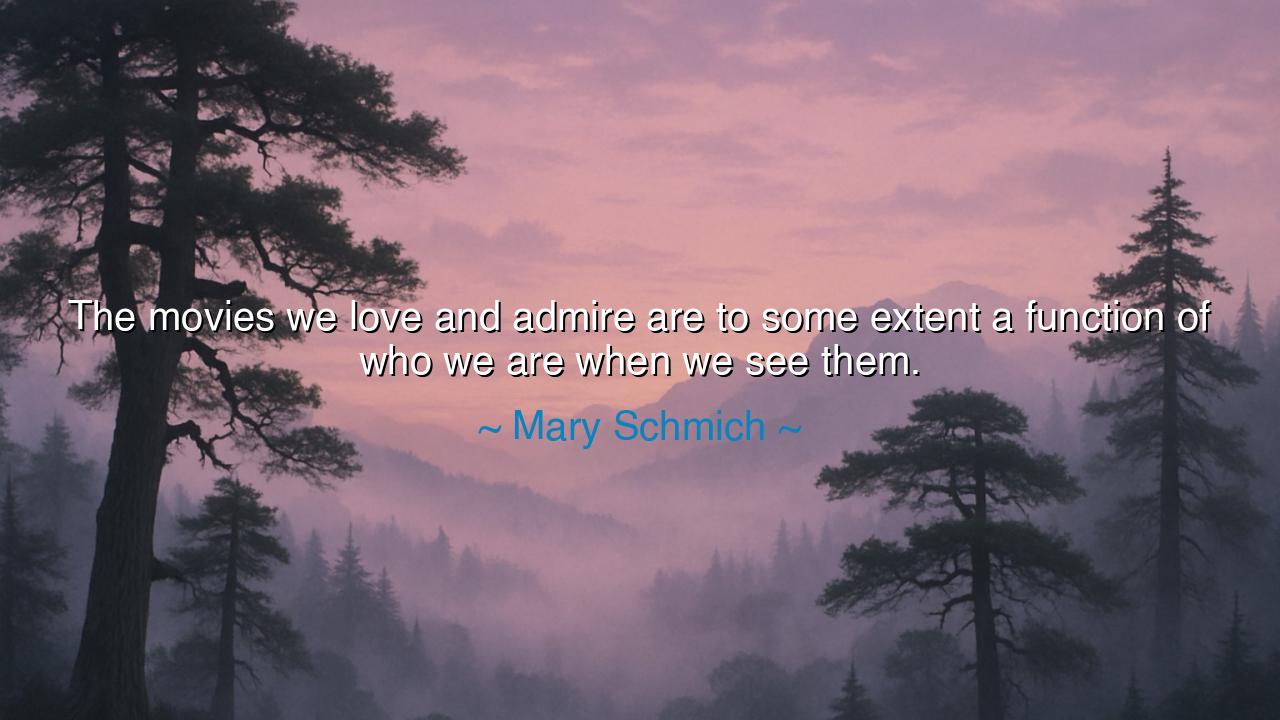
The movies we love and admire are to some extent a function of
The movies we love and admire are to some extent a function of who we are when we see them.






Hear the gentle but piercing words of Mary Schmich, writer and observer of human hearts, who declared: “The movies we love and admire are to some extent a function of who we are when we see them.” In this saying, she reminds us that cinema is not only a reflection of the screen, but a reflection of the soul gazing upon it. What we draw from a film depends not only on its story but on the story we ourselves are living at the time. A comedy may bring laughter to one heart, and the same scene may bring tears to another, for we carry into the theater the burdens and blessings of our own lives.
The meaning of this truth lies in the mystery of perspective. When we are young, the tales of romance thrill us with promise; when we are older, they may awaken nostalgia or regret. A war film seen in peace may feel like distant history, but seen after loss, it may feel like a mirror of one’s own grief. The movie remains the same, but we are not the same. Time, experience, joy, and suffering transform our hearts, and in turn, they transform the way art speaks to us.
Consider the tale of It’s a Wonderful Life, a film that in its time was met with modest response, but later became beloved across generations. To the weary worker, it speaks of hope in hardship. To the elder, it speaks of the legacy of kindness. To the one standing on the edge of despair, it whispers of the unseen value of their life. The film did not change, but its audiences did. What they saw was not only George Bailey’s story, but their own reflected back through the lens of their present struggles.
History too bears witness. When Casablanca was first released in 1942, in the midst of World War II, it was not merely a romance, but a cry of resistance, a hymn of sacrifice. To those who watched it then, every word carried the weight of war, patriotism, and duty. Yet to later generations, it became a meditation on love lost and choices made in the name of higher callings. The story was constant, but the meaning shifted with the hearts of those who came to it.
Schmich’s words also remind us that art is not static—it is alive, and its life depends on the one who beholds it. We change, and in our changing, we draw new meaning from the same story. A film admired in youth for its glamour may, in later years, be loved for its wisdom. A tragedy once dismissed as bleak may, after suffering, feel true and necessary. This is the dialogue between art and the human soul: a conversation that evolves with every season of life.
The lesson is profound: approach the stories you love with humility, knowing they may teach you something new when you return to them. Do not say, “I know this film already,” for you do not—because you are no longer the same. Revisit the works that once moved you, and let them move you again in different ways. They are mirrors, and as your face changes, so too will the reflection.
So, children of tomorrow, remember this: the movies we cherish are not fixed monuments, but companions on our journey. They walk with us through the changing landscapes of our lives, sometimes whispering, sometimes shouting, always offering what we are ready to hear. As Mary Schmich declared, “The movies we love and admire are to some extent a function of who we are when we see them.” Therefore, honor both the films and your own becoming, for together they weave the story of how art and life are forever entwined.






AAdministratorAdministrator
Welcome, honored guests. Please leave a comment, we will respond soon